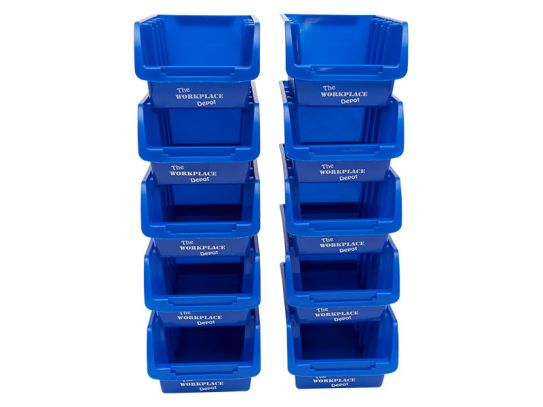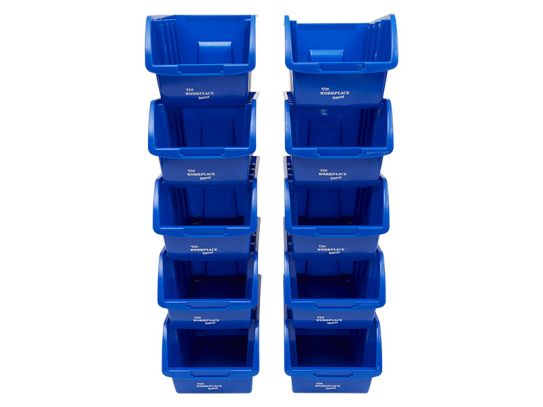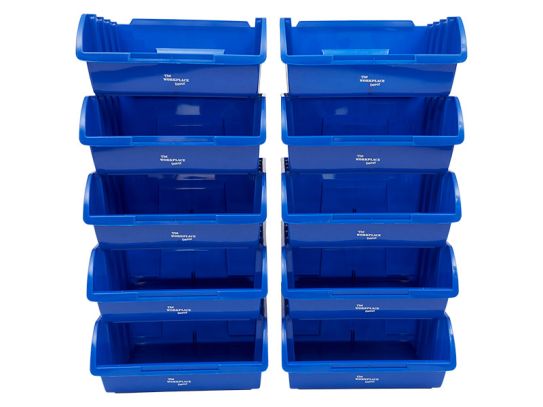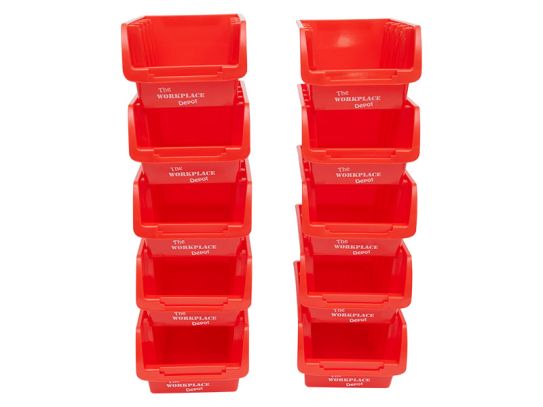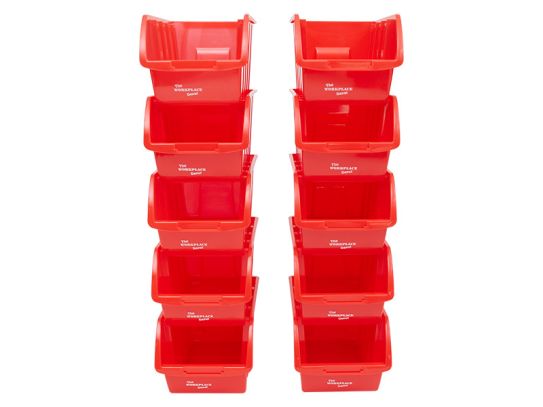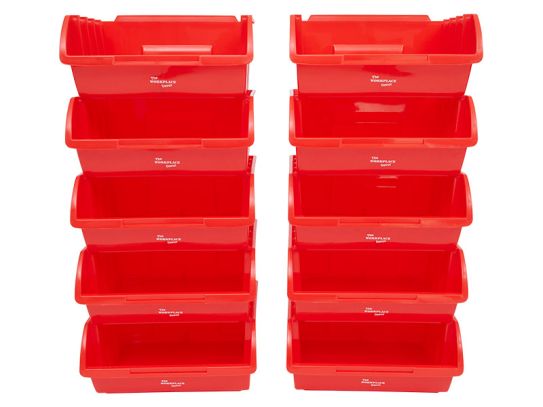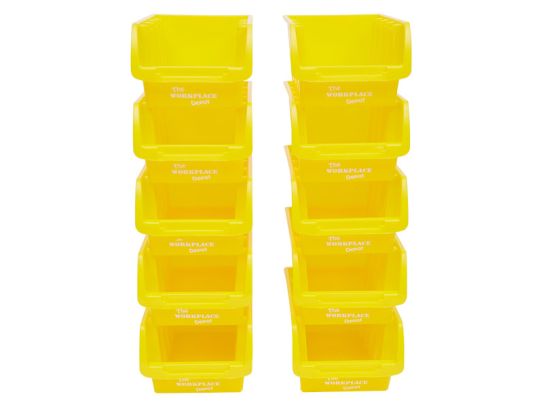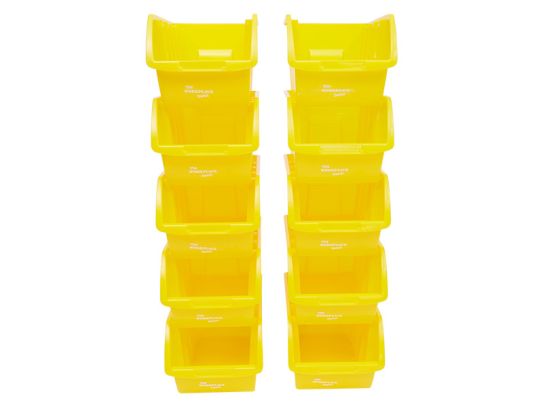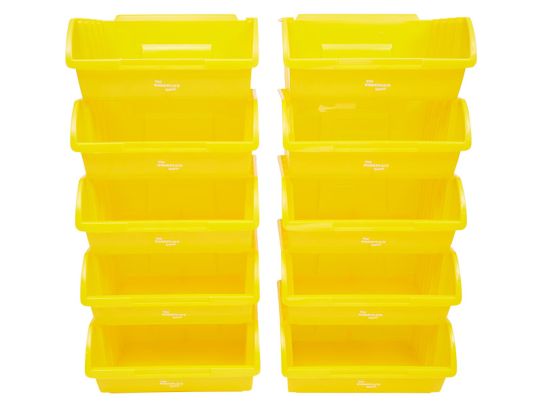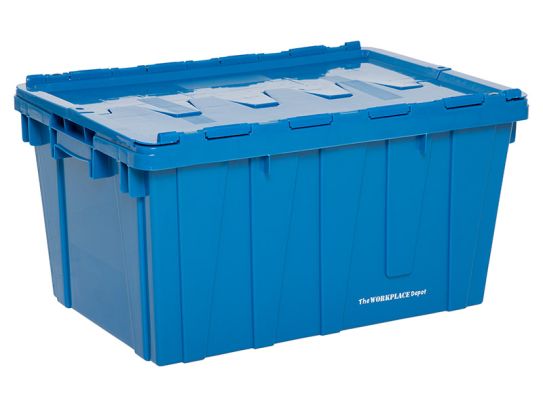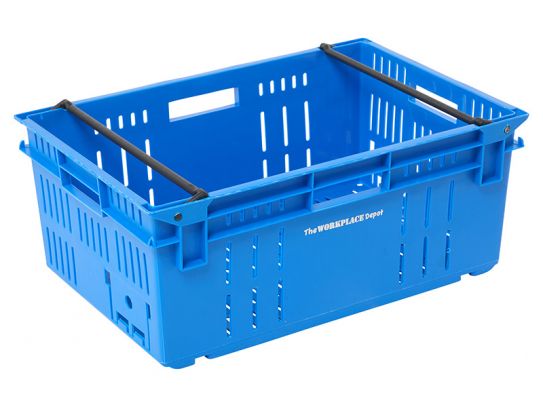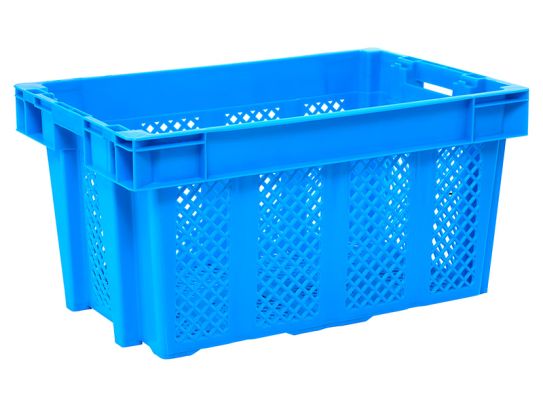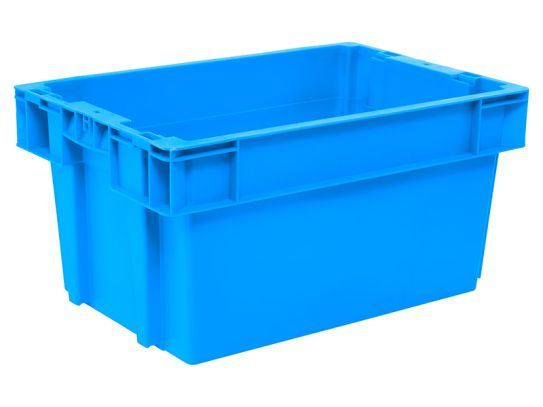Plastic Storage Boxes
Our durable plastic storage boxes are the perfect solution for keeping your workplace organised and efficient. With a variety of sizes and styles to choose from, you'll be able to find the perfect storage solution for your needs. Made of sturdy and durable plastic, these boxes are designed to withstand the rigours of everyday use and are easy to clean and maintain.
Stackable and Space-saving Storage Boxes for Your Every Need
Introducing our versatile and durable plastic storage boxes! Whether you're in a factory, warehouse, or office, our range of boxes, bins, and containers are the perfect solution for keeping your workplace organised and efficient.
Our picking bins are perfect for separating and organising small parts and components, while our parts bins are ideal for storing larger items. Our storage bins are perfect for keeping your goods secure and protected, and our plastic crates are ideal for transporting goods around your facility.
Our Euro containers and nesting containers are perfect for saving space, and our pallet boxes and attached lid containers are ideal for storing and transporting larger items.
These boxes are made of sturdy and durable plastic, and are designed to withstand the rigours of everyday use. They are easy to clean and maintain, and are stackable, making them an ideal choice for any workplace.
What Are Plastic Storage Boxes?
Plastic storage boxes are containers made of plastic material, primarily used for organising and storing items in a variety of settings such as workplaces, warehouses, and homes. They come in a variety of sizes and styles, including picking bins, parts bins, storage bins, plastic crates, Euro containers, nesting containers, pallet boxes, and attached lid containers. They are known for their durability, ease of cleaning and stacking, and can be used to store goods or transport goods. They are also designed to save storage space and improve efficiency.
What Are Some Common Uses for Plastic Storage Boxes?
Some common uses for plastic storage boxes include:
- Organising and storing small parts and components in a factory or warehouse setting, such as screws, nails, and bolts.
- Storing and transporting large items, such as tools and equipment, in a workshop or garage.
- Keeping office supplies, such as paper, pens, and folders, organised and easy to find.
- Storing and transporting goods, such as food and medical supplies, in a distribution centre or logistics facility.
- Organising and storing household items, such as clothes, toys, and seasonal decorations.
- Storing and transporting items in a moving or storage container.
- Storing and transporting items in a retail setting, such as toys, gifts, and other products.
- Storing and transporting items in a farming or agriculture setting, such as seeds, tools, and equipment.
- Storing and transporting items in a construction setting, such as tools, equipment, and materials.
- Storing and transporting items in a medical or healthcare setting, such as medical supplies, equipment, and medications.
What Are the Different Types of Plastic Storage Boxes?
There are many different types of plastic storage boxes, each with unique features and uses. Some of the most common types include:
- Picking Bins: These small plastic bins are perfect for storing and organising small parts and components. They are often used in factories and warehouses to separate and organise items such as screws, nails, and bolts.
- Parts Bins: These larger plastic bins are ideal for storing larger items such as tools and equipment. They are often used in workshops and garages to keep items organised and easy to find.
- Storage Bins: These bins are designed to keep items secure and protected. They are often used to store goods in warehouses and distribution centres.
- Plastic Crates: These crates are designed for transporting goods around a facility. They are often used in warehouses, factories, and distribution centres.
- Euro Containers: These containers are designed to save storage space by nesting inside each other. They are often used in warehouses and distribution centres.
- Nesting Containers: These containers are designed to save space by nesting inside each other. They are often used in warehouses, factories, and distribution centres.
- Pallet Boxes: These boxes are designed for storing and transporting large items. They are often used in warehouses, factories, and distribution centres.
- Attached Lid Containers: These containers have lids that are attached to the container, making them easy to open and close. They are often used in warehouses, factories, and distribution centres.
- Stackable Containers: These containers have a design that allows them to be stacked on top of each other, saving space.
- Clear Storage Boxes: These are transparent storage boxes that allow you to see the content inside without opening the box, making it easy for identification.
- Portable Storage Boxes: These are lightweight storage boxes that can be easily moved around and carried to different locations.
- Hinged Lid Containers: These containers have a hinged lid that can be opened and closed easily, making it easy to access the items inside.
What Are the Key Features to Consider When Choosing Plastic Storage Boxes?
When choosing plastic storage boxes, there are several key features to consider:
- Size: Consider the size of the items you need to store and choose a storage box that will accommodate them.
- Durability: Look for storage boxes that are made of sturdy and durable plastic that can withstand the rigours of everyday use.
- Stack-ability: If you're looking to save space, choose storage boxes that are stackable, allowing you to stack them on top of each other.
- Locking mechanism: If you're looking for added security, choose storage boxes that have a locking mechanism to keep your items safe and secure.
- Portability: If you need to move your storage boxes around, choose ones that have handles or wheels for easy transport.
- Ease of cleaning: Choose storage boxes that are easy to clean and maintain, as they will be used in a variety of settings.
- Transparency: If you want to easily identify the content inside, choose clear storage boxes.
- Lid: Consider whether you need a lid on your storage box, and if so, whether it should be attached or hinged for easy access.
- Compatibility: Make sure that your storage boxes are compatible with the shelving or racking system you are using, if you are using one.
By considering these key features, you'll be able to choose the best plastic storage boxes for your specific needs.
How Can I Choose the Right Size of Storage Box for My Needs?
When choosing the right size of storage box, it's important to consider the items you need to store. Here are a few things to keep in mind:
- Measure the items you need to store: Take the measurements of the items you need to store and choose a storage box that will accommodate them.
- Consider the amount of items you need to store: If you have a lot of items to store, choose a larger storage box. If you have fewer items, a smaller box may be more suitable.
- Think about the space you have available: Consider the space you have available for storage, and choose a storage box that will fit in that space.
- Consider the weight of the items: If the items you need to store are heavy, choose a storage box that can support the weight without breaking or warping.
- Consider your future needs: If you think you may need to store more items in the future, choose a storage box that is slightly larger than what you currently need.
By keeping these things in mind, you will be able to choose the right size of storage box for your needs.
Are Plastic Storage Boxes Durable Enough for Everyday Use?
Plastic storage boxes are generally durable enough for everyday use. They are made of sturdy and durable plastic that can withstand the rigours of everyday use. However, the durability of plastic storage boxes can vary depending on the brand, the quality of the plastic, and the way they are used.
When choosing plastic storage boxes, look for ones that are made of high-quality plastic and that have been reinforced at stress points for added strength. Also, look for storage boxes that have been tested and certified for their durability.
It's also important to note that, like any other product, plastic storage boxes can wear out over time due to frequent use, exposure to the sun, and exposure to extreme temperatures. So it's important to clean and maintain them properly and avoid harsh conditions.
Are There Any UK or European Industry Standards or Regulations That Apply to Plastic Storage Boxes?
There are several industry standards and regulations that apply to plastic storage boxes in the UK and Europe. These include:
- British Standard BS EN 840-1:2011 - This standard applies to the design and construction of mobile plastic storage boxes and is applicable to the UK.
- European Standard EN ISO 11607-1:2006 - This standard applies to the packaging and packaging materials for terminally sterilised medical devices and is applicable to all EU countries.
- European Standard EN ISO 14122-3:2016 - This standard applies to the safety of machinery and is applicable to all EU countries.
- The Machinery Directive 2006/42/EC - This EU directive applies to the design and construction of machinery, including storage boxes, and is applicable to all EU countries.
- The Personal Protective Equipment (PPE) Directive 89/686/EEC - This EU directive applies to the design and construction of PPE, including storage boxes, and is applicable to all EU countries.
- The Construction Products Regulation (CPR) 305/2011 - This EU regulation applies to the design and construction of construction products, including storage boxes, and is applicable to all EU countries.
- The Waste Electrical and Electronic Equipment (WEEE) Directive 2012/19/EU - This EU directive applies to the disposal and recycling of electrical and electronic equipment, including storage boxes, and is applicable to all EU countries.
It's important to note that these standards and regulations may be subject to change, and it's always best to check with the relevant authorities for the most up-to-date information.
